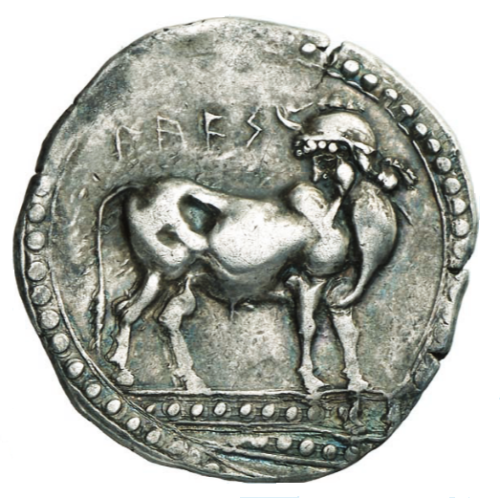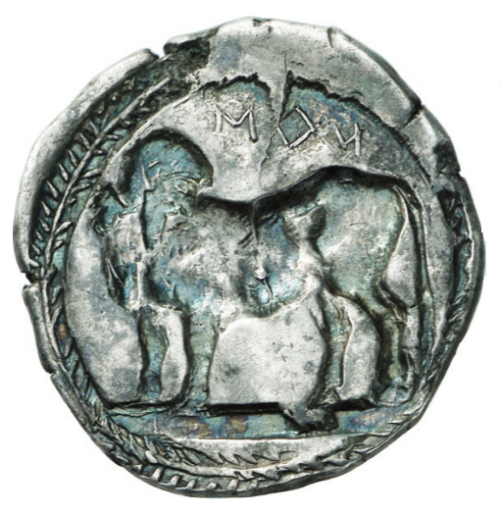archaicwonder:Very Rare Incuse Stater from Laos, Lucania, c. 510-500 BCThe obverse has the inscripti
archaicwonder:Very Rare Incuse Stater from Laos, Lucania, c. 510-500 BCThe obverse has the inscription ΛAFΣ with a man-headed bull standing to the right, its head turned back to face to left in an exergual line of a row of dots between two lines below. The reverse is a similar type, incuse, with the inscription NOM in retrograde above.Laos (aka Laüs or Laus) was an ancient city of Magna Graecia on the coast of the Tyrrhenian Sea. It was a colony of Sybaris at the mouth of the Lao River, which formed the boundary between Lucania and Bruttium in ancient times. The river and the city have the same name in Ancient Greek.Little is known about its foundation or history. Herodotus states that the inhabitants of Sybaris, who had survived the destruction of their city in 510 BC, took refuge in Laos and Scidrus. Strabo (c. 64/63 BC - AD 24) describes the city as still being in existence in his time but. Pliny the Elder, whose Natural History was published in approximately 77–79 AD, states that the city no longer existed in his.The city was downsized gradually and abandoned in the second half of the third century BC. This was probably caused by the Punic Wars, which had a profound impact on the economy of the Tyrrhenian coast. The only material evidence of the Archaic Greek city consists of some silver coins like this one with the legend LAFINON (ΛAFΣ) and symbols similar to those of the coins of Sybaris, dated between 500 and 440 BC.Today the archaeological site of the city can be found at a short distance to the east of Marcellina, Calabria. The site near Marcellina was possibly a refoundation of the Greek city by Lucanians on a previously unoccupied site. Here is a map of ancient region of Lucania. The city of Laos (spelled as Laus) is at the bottom center. -- source link
Tumblr Blog : archaicwonder.tumblr.com

